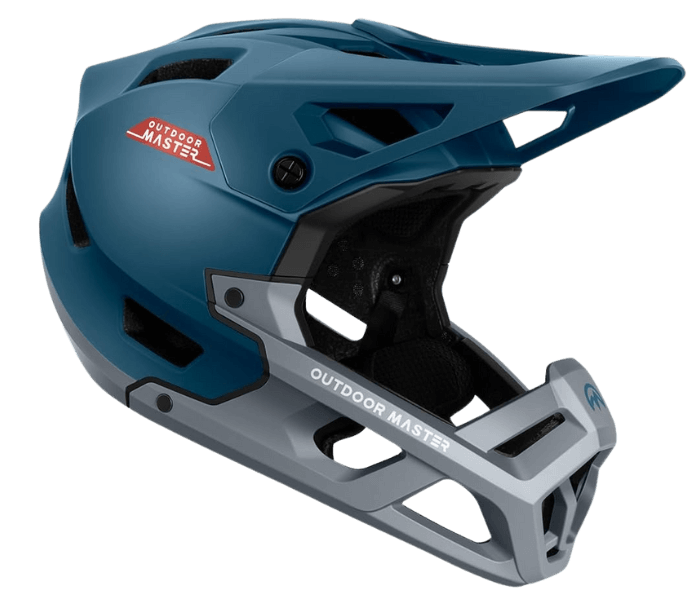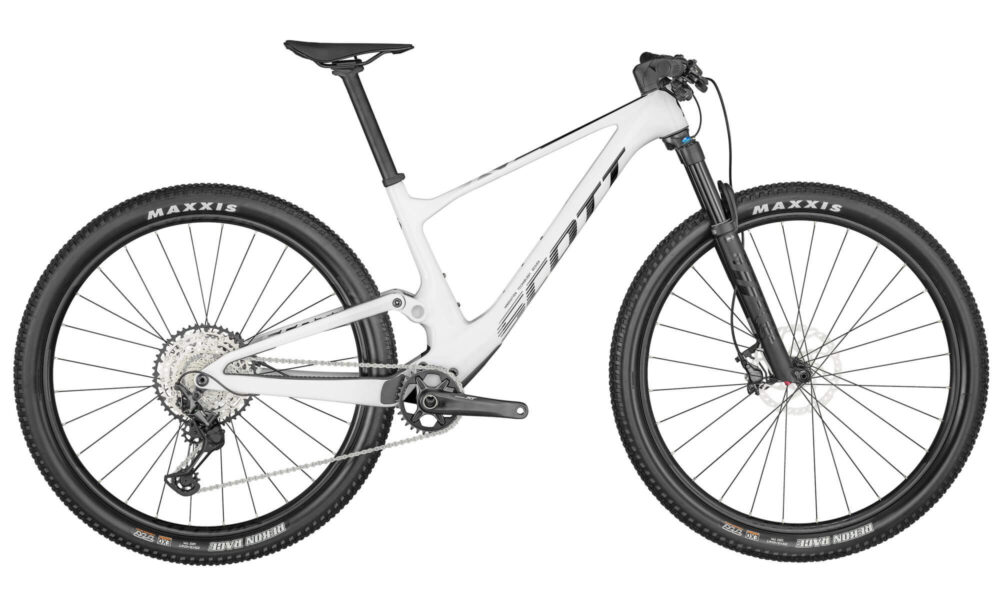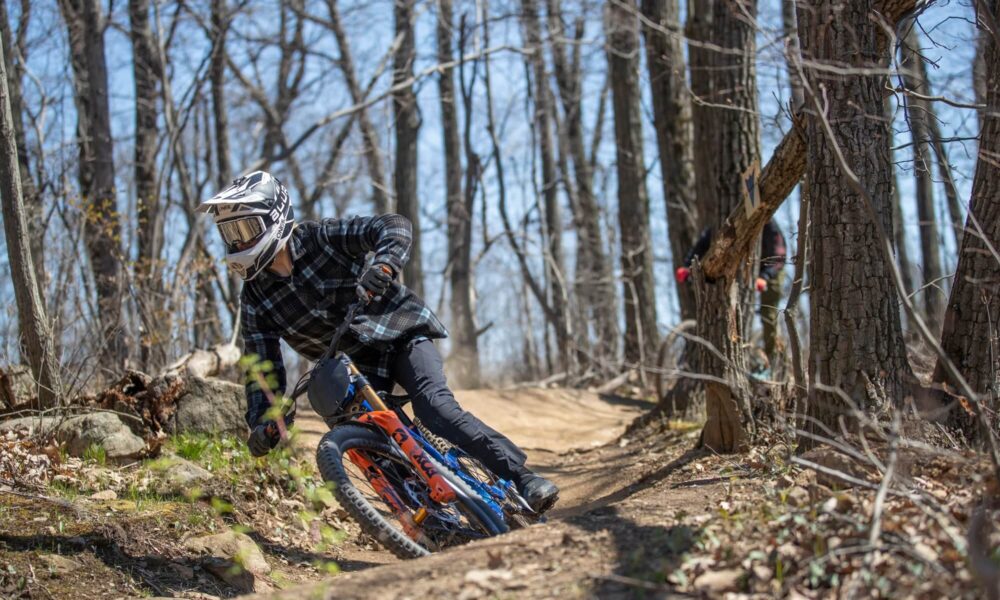Scott Mountain Bikes, a brand synonymous with quality and innovation in the…
10 Critical Factors in Choosing Full Face Mountain Bike Helmet

*we may earn a commission for purchases made using our links. Please see our disclosure to learn more
Full-face mountain bike helmet are essential gear for fellow trailblazers and downhill daredevils gearing up for their next adrenaline-pumping adventure!
These helmets are more than just standard headgear; they are your guardian on the trails and your shield in the wild. Choosing the right full-face mountain bike helmet is a blend of science, art, and personal style.
Whether you’re plunging down steep descents or tackling technical terrains, this guide is your comprehensive tool for selecting the perfect helmet.
We will delve into the 10 critical factors, from understanding your riding style to ensuring optimal fit and protection, to help you make the best choice for your full-face mountain bike helmet. Ready for this adventure? Let’s dive in!
Table of Content
- Type of Riding: Know Your Terrain
- Size and Fit: The Comfort Equation
- Weight and Ventilation: Keeping a Cool Head
- Protection Features
- Adjustability and Compatibility
- Price
- Safety Standards
- Shell Material
- Retention System
- Visor and Goggle Compatibility
- FAQs
1. Type of Riding: Know Your Terrain
First and foremost, it’s essential to understand the riding you’re into. Full-face helmets are your go-to for downhill, BMX, and aggressive enduro riding.
They offer unparalleled protection compared to their half-shell counterparts. However, suppose you’re more into trail riding or all-mountain escapades.
In that case, you should lean towards convertible helmets or open-face options. Why? These are more versatile and provide better ventilation for those long, scenic rides. It’s all about matching your helmet to your riding style.
2. Size and Fit: The Comfort Equation
Size and fit are paramount. I can’t stress this enough! A helmet that is too loose is as good as wearing no helmet at all. And a too-tight one?
Well, that’s just a headache waiting to happen—literally. Look for helmets with adjustable visors and straps.
These allow for a more personalized fit, ensuring your helmet sits snugly but comfortably on your head. Remember, comfort equals concentration, and concentration equals safety.

3. Weight and Ventilation: Keeping a Cool Head
Full-face helmets, traditionally, have been on the heavier side. But modern versions are much lighter thanks to advancements in materials and design.
They won’t leave you feeling like you’re carrying a boulder on your shoulders. Ventilation is another critical aspect.
Trust me, there’s nothing worse than a sweltering head on a hot day’s ride. Look for helmets that boast excellent ventilation. These keep the air flowing and your head cool, letting you focus on the trail ahead.
4. Protection Features
When it comes to mountain biking, your safety is paramount. Full-face helmets offer superior protection compared to their half-shell counterparts.
Here’s why: these helmets come equipped with a chin guard and additional coverage for your face – crucial for those unexpected tumbles.
But wait, there’s more – some helmets feature the MIPS (Multi-Directional Impact Protection System). This system is like having an extra shield designed to reduce rotational forces that can result from specific impacts.
Think of MIPS as your secret safety feature, working behind the scenes to keep you safer.
5. Adjustability and Compatibility
Flexibility is critical in mountain biking. Some full-face helmets offer the unique ability to convert into open-face helmets.
This feature is perfect for those who enjoy a variety of riding styles. You get two helmets in one – how cool is that
But it’s not just about versatility. A helmet needs to fit like it was made just for you. Look for helmets with adjustable visors and straps.
This isn’t just about comfort; it’s about ensuring the helmet stays securely in place, no matter the trail’s twists and turns.
6. Price
Let’s talk money. Full-face helmets can be pricier than half-shell options. But think of it as investing in your safety and enjoyment.
Fortunately, there are helmets available across a spectrum of price points, allowing you to find quality without overspending:
• Low Price Range (Approximately $50 – $100):
Helmets focus on essential protection and comfort within this price range. Features are generally standard, including adequate ventilation and sufficient padding.
Materials used are often basic, durable plastics with standard impact-absorbing foam. These helmets are ideal for beginners or casual mountain bikers who need essential protection without advanced features.
• Mid-Range Price (Approximately $100 – $200):
Helmets in this price range often balance comfort and additional safety features. They might include better adjustment systems, lighter materials like advanced polymers, and more efficient ventilation systems.
The interior padding is usually more ergonomic and comfortable, offering better sweat absorption. This range suits serious riders who want enhanced features without a hefty price tag.
• High Price Range (Over $200):
In this category, you’re paying for cutting-edge technology, top-quality materials, and the latest features.
Expect advanced brain protection systems like MIPS (Multi-directional Impact Protection System), ultra-light materials like carbon fiber, and superior ventilation systems designed for optimal airflow.
These helmets are often more aerodynamic, offering less resistance and more comfort at higher speeds. They are designed for professional riders or those who want the best performance gear, regardless of cost.
Remember, the most expensive helmet is only sometimes the best for your needs. Consider what features are essential for your riding style and find a helmet that fits your budget. Sometimes, the best value comes from finding that perfect balance between cost and features.
7. Safety Standards
When it comes to selecting the perfect full-face mountain bike helmet, safety should be your top priority.
That’s why it’s essential to choose a helmet that complies with industry-recognized safety standards, such as CPSC (Consumer Product Safety Commission) and ASTM (American Society for Testing and Materials).
These standards are the bedrock of helmet safety, acting as your invisible guardian during your thrilling rides on the trail. They guarantee that your helmet is up to the task of protecting your head when you need it the most
CPSC, is a U.S. government agency responsible for ensuring the safety of consumer products. When a helmet is CPSC-certified, it means it has undergone rigorous testing to meet the safety requirements set forth by this agency.
On the other hand, ASTM, is an international organization that establishes and publishes technical standards for various products, including helmets.
These certifications ensure that your full-face mountain bike helmet is designed and built to withstand the demands of off-road riding.
They regulate crucial features like impact resistance, ventilation, and overall helmet construction. So, always make it a point to check for these certifications to guarantee your safety on the trails.
8. Shell Material
The helmet’s outer shell – it’s your first line of defense. You’ll come across common materials: polycarbonate, fiberglass, and carbon fiber.
Polycarbonate is like the trusty workhorse – durable and affordable. Fiberglass blends flexibility with toughness, like that resilient trail that keeps challenging you.
Carbon fiber? That’s the high-tech, lightweight option for those who want top-notch performance. It’s like upgrading your bike to a sleeker model – more expensive but worth it!
9. Retention System
Now, let’s talk about keeping that helmet snug and secure. A good retention system (often a dial or ratchet at the back) is like the perfect trail buddy – it’s there to ensure your helmet stays in place, no matter how wild the ride gets.
A helmet that wobbles is a big no-no; it’s like riding with a loose saddle – uncomfortable and unsafe. So, always give that retention system a good test before hitting the trails.
10. Visor and Goggle Compatibility
Last but not least, let’s remember your eyes. A helmet with a well-integrated visor and goggles compatibility is like having the perfect sunglasses on a sunny day.
The visor keeps the sun and debris at bay, ensuring you have clear, unobstructed views of the trail ahead. And for those who wear goggles, compatibility is critical. You want a seamless fit – think of it as customizing your bike to make it uniquely yours.
Conclusion:
And there you have it, folks – the comprehensive guide to choosing your full-face mountain bike helmet. Remember, a helmet is more than just equipment; it’s a vital companion on your thrilling rides.
It’s about balancing safety with comfort, durability with style, and price with performance. Don’t rush this decision.
Take your time, try different options, and consider what feels suitable for you and your biking style. Whether it’s the advanced protection features, the perfect fit, or the compatibility with your riding gear, every factor plays a crucial role in your ultimate choice.
if you only want to use a standard mountain bike helmet, please read this article
FAQs
1. What are the critical considerations for choosing a full-face mountain bike helmet?
When selecting a full-face mountain bike helmet, consider your type of riding (downhill, BMX, enduro), ensure the helmet fits well and is comfortable, check the weight and ventilation for a more relaxed experience, and look for essential protection features like MIPS.
Also, consider adjustability and compatibility with other gear, price points that fit your budget, compliance with safety standards, the material of the helmet’s shell, an effective retention system, and visor and goggle compatibility.
2. How do I ensure the helmet fits correctly?
To ensure a proper fit, look for helmets with adjustable visors and straps, allowing a personalized fit. The helmet should sit snugly on your head without being too tight to cause discomfort or too loose to compromise safety. It’s crucial to try on different sizes and adjust the fit using the retention system.
3. Why is ventilation important in a full-face helmet, and how can I judge it?
Good ventilation is critical to keep your head cool during rides, especially on hot days. Look for helmets with well-designed ventilation systems that promote airflow.
Judging ventilation involves checking the number and size of vents on the helmet and considering the climate and intensity of your rides.
4. Is it worth investing in a high-priced full-face mountain bike helmet?
High-priced helmets often come with advanced features like lighter materials, superior ventilation, and advanced safety features like MIPS.
If you’re a professional rider or seek top-notch performance, these helmets are worth the investment. However, mid-range helmets can also offer a good balance of safety, comfort, and price for most riders.
5. What safety standards should I look for in a full-face mountain bike helmet?
Ensure your helmet meets top safety standards like CPSC (Consumer Product Safety Commission) and ASTM (American Society for Testing and Materials).
These certifications guarantee that the helmet can adequately protect you during intense rides. Always check for these certifications when buying a helmet.



